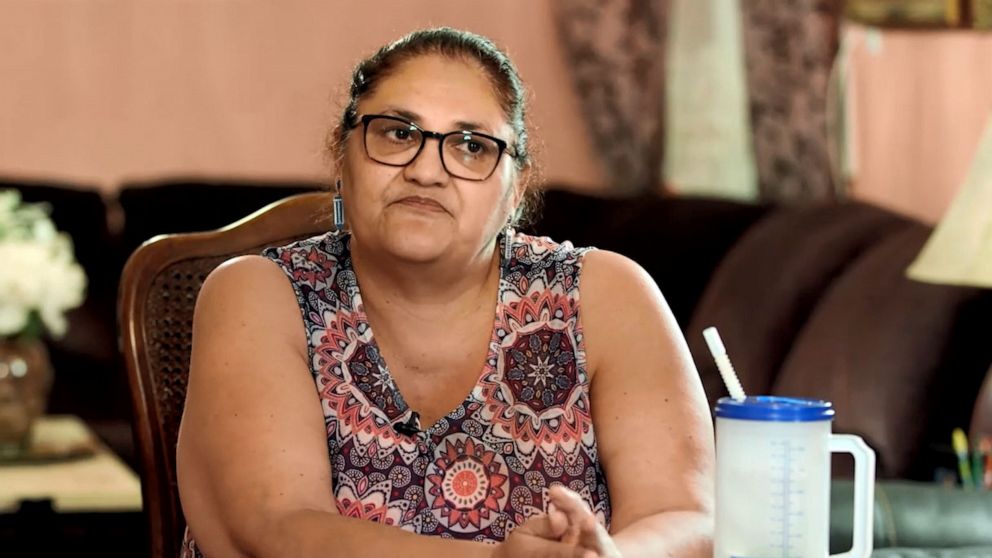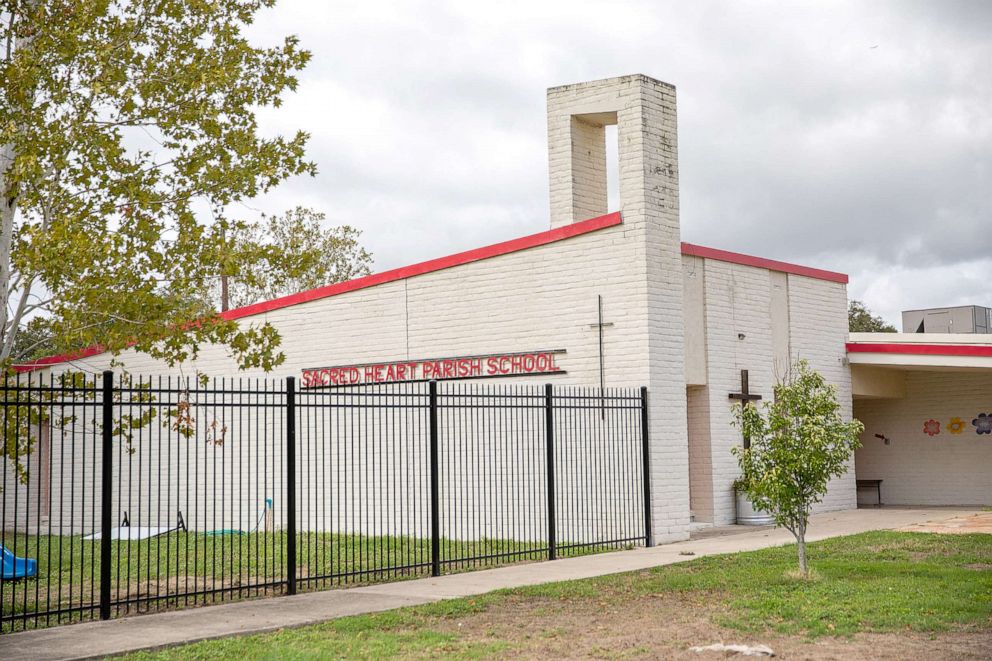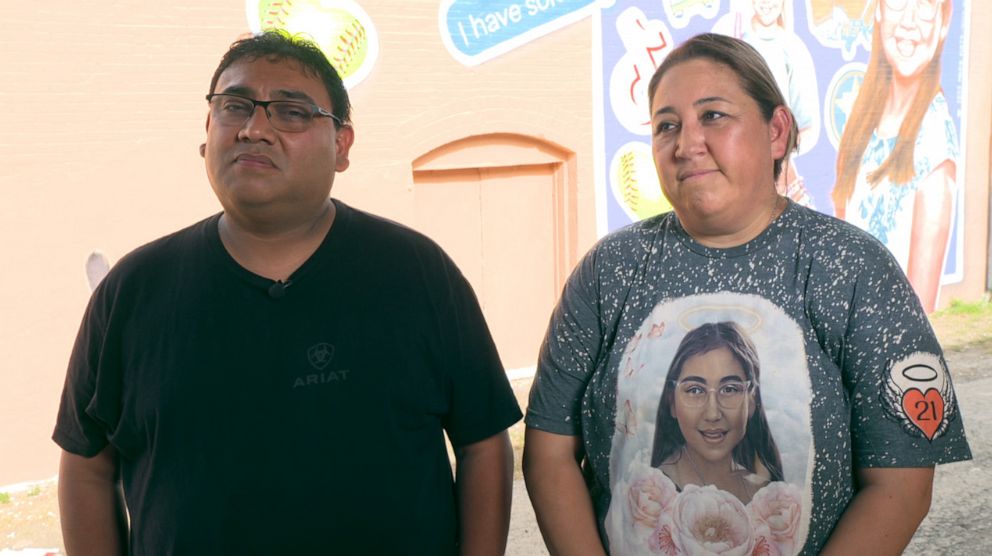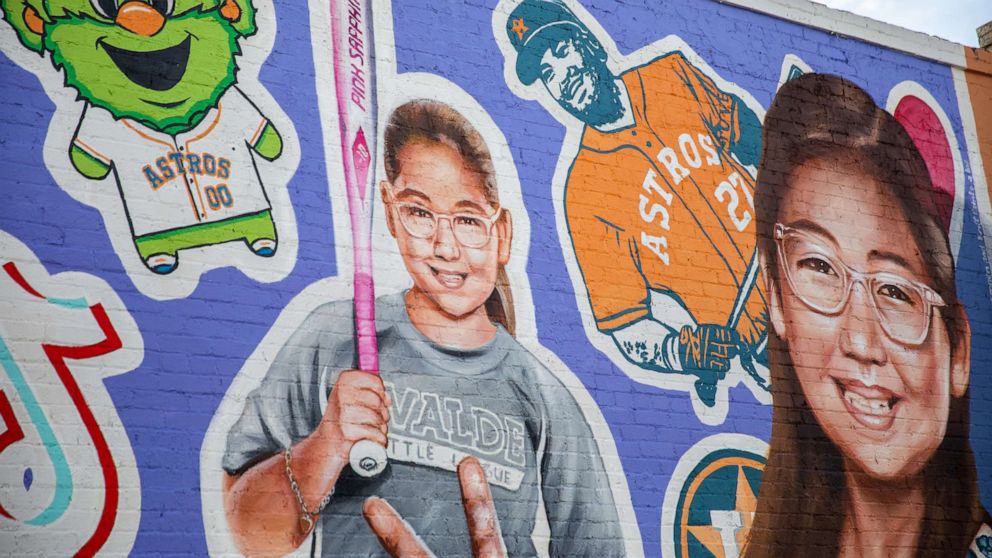'I'm mentally preparing myself': Uvalde students, teachers face new school year
The new year was delayed to give the district and families more time to prepare.

UVALDE, Texas -- When gunfire broke out at Robb Elementary School in Uvalde, teacher Elsa Avila said her fourth graders followed lockdown protocols.
"I slammed my door. I turned off the lights, and I told the kids, 'Let's move, let's move. Let's go, let's go.' They knew what to do," she told ABC News.
As soon as they hid in a corner of the classroom, they heard gunfire in the hallway, Avila said, and the kids started crying.
When Avila stood up to check on her students, she said she felt a gunshot pierce her abdomen and she fell to the floor.
"The kids are terrified," she said. "I was in so much pain. I couldn't move, I couldn't talk."
She said her fourth graders comforted her and told her, "It's going to be okay...We love you."
The gunman never entered Avila's classroom. She spent weeks in the hospital recuperating.
As the summer drew to a close, Avila, an educator for more than 30 years, knew she wasn't ready to return to school.
TIMELINE: Tracking the changing story of the Uvalde school shooting

Tuesday marks the first day of classes for the Uvalde school district, over three months after the May 24 massacre that killed 19 students and two teachers. The school year, which usually starts in August, was pushed back to give everyone more time to prepare for the new year.
With Robb's doors shuttered, students from that school will be moved to one of three other district elementary schools.
The students who were wounded at Robb left the district and are now attending Uvalde's Sacred Heart Catholic School, where classes started in August, according to the diocese. In the wake of the massacre, Sacred Heart said its enrollment more than doubled to over 100 students.
Some Uvalde families, critical of the school district's safety protocols, aren't ready to send their kids back to classrooms and are opting for homeschooling or virtual learning. Uvalde's school district said it created a new virtual schooling framework so children can learn from home and access counselors and other resources remotely.
Eight-year-old Zayon Martinez, who was at Robb the day of the massacre, is one of those choosing virtual learning as he starts third grade.
Zayon didn't act like himself for weeks after the shooting, his dad, Adam Martinez, told ABC News. Zayon is starting to get back to normal, he said, but still has nightmares and is extra cautious.
Early in the summer, Adam Martinez said he knew his 12-year-old daughter and Zayon wouldn't be ready to return to their classrooms.
"We started putting pressure on the school board and the police, city council," he said. "We were demanding actions like more school safety, firing the cops, fencing, bulletproof windows."
WATCH: Uvalde teacher describes moment he saw shooter, trying to protect students

The district soon "started moving a little faster" with the new protocols, like fencing and a larger police presence, he said.
"But as I told my children that, they didn't care," Adam Martinez said. "They said, 'Who cares if there's cops or not? They're not gonna go in, they're not gonna protect us.'"
A state investigation found the police response to the school shooting was delayed 77 minutes and plagued with failures. A special committee in the Texas legislature issued a report that found school district police chief Pete Arredondo "failed to perform or to transfer to another person the role of incident commander."
Arredondo was fired on Aug. 24.
His lawyers said in a statement that day that he couldn't have served as incident commander because he was on the front line and that officers were unaware there were others in the room with the shooter.
The legislature's report also found failures in facilities maintenance and advance preparation, including insufficient security at points of entry and a "culture of noncompliance by school personnel who frequently propped doors open and deliberately circumvented locks."
MORE: Months after Uvalde, Texas shooting, 'meet-the-teacher' night shows security improvements vary

District superintendent Dr. Hal Harrell announced new security measures this summer, including assigning 33 state public safety officers to the district; installing 500 cameras; creating one single point of entry at each school; and hiring a "campus monitor" responsible for walking the grounds and checking the gates, locks and doors.
Avila, who isn't returning to teach as she recovers, said she's not sure what will make students and parents feel comfortable to transition back to classrooms, because she sees a lot of holes in the district's protocols.
Avila said Uvalde's schools need better training, noting that teachers had been trained for a "lockdown," but not an active shooter.
"I know if the shooter's in the building we should be trying to get out. But we were never trained on, how are you going to get out if there's somebody in the building?" she said, noting that the classroom windows didn't open.
She said some of the protocols -- locking doors and turning off lights -- were a hindrance to police who had no idea they were in the classrooms.
The district said it'll conduct "extensive professional development and training on campus security, campus and district protocols."
SEE ALSO: Last survivor of Uvalde school shooting discharged from hospital after two months

Avila's also concerned about staff communication. She said she texted her principal saying she'd been shot, but said that wasn't shared with police.
The district has promised to "evaluate and audit communication and WiFi" at its campuses.
While the district is now providing mental health resources, Avila said she's worried about the students whose parents aren't comfortable letting their children meet with counselors.
And although Uvalde is offering virtual learning, Avila said she didn't find online school during the pandemic especially effective.
"A lot of them don't have adult supervision during that time...so it's up to the child to be disciplined and follow along. And we just didn't see that happening," she said.
Adam Martinez said his wife will be at home to monitor their 8-year-old and 12-year-old's virtual learning. The family plans to reevaluate online schooling at the end of the semester.
Venessa Rendon is sending her three children back to in-person school, including her son who attended Robb.
"In my home, virtual is not an option. I feel that their interaction with their peers, and then being in a classroom setting, is more beneficial to them," she said.
Junior Andrea Perez said her mom wanted her to try virtual learning, but she felt it'd be too difficult to learn that way. Her cousin who attended Robb isn't going back to in-person learning yet, she added.
Senior Jazmin Cazares, whose 9-year-old sister, Jackie, died at Robb, is also returning to the classroom.
"I'm mentally preparing myself," she said. "I'm ready to be back, to try to find a little normalcy in my life, but it's really rough."
Cazares found it hard to stay focused during COVID-19 virtual learning, so she chose in-person to get more interaction with her teachers.
"Everyone's a little divided" on back to school, she said. The teen said she thinks the district hasn't "done much" to upgrade security.
"If you don't feel safe at school, if your parents don't feel like you're safe at school, don't go. There're so many other options," the teen said.
Veronica Mata, whose bubbly 10-year-old daughter, Tess Mata, was killed at Robb, is returning to her job as a kindergarten teacher at another elementary school in Uvalde.
"Teaching was always something that I wanted to do. And I know that Tess would have wanted me to go back," she told ABC News. "I think if I would have stayed home, it wouldn't have been good for me."
"She always loved teaching," her husband, Jerry Mata, added.
Veronica Mata said she feels safe going back to the classroom.
She added, "We want the accountability. But we can't let that anger take over our lives. Tess wasn't an angry person and I think I cannot live being angry all the time."
ABC News' Josh Margolin, Olivia Osteen, Jim Scholz, Lucien Bruggeman, Joe Diaz, Kiara Alfonseca, Kat Caulderwood, Brian Mezerski, Mireya Villareal and Patrick Linehan contributed to this report.














